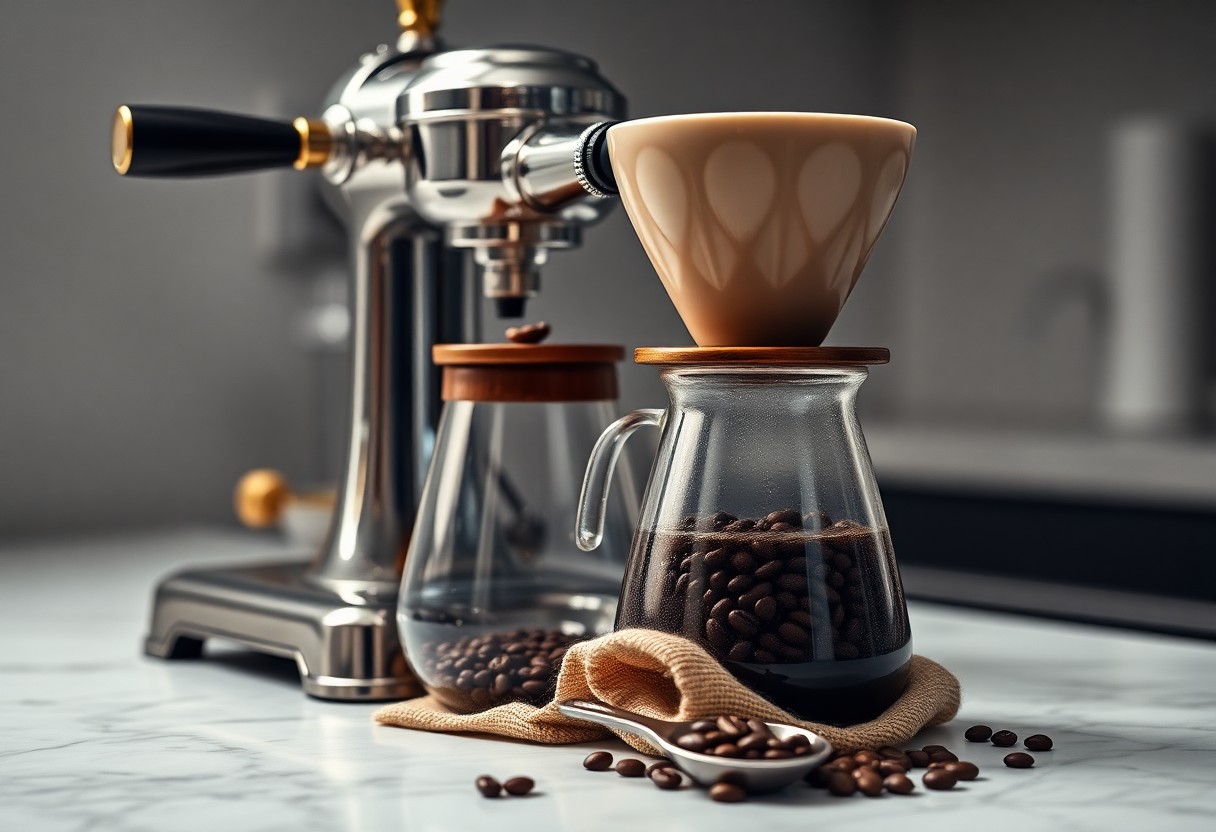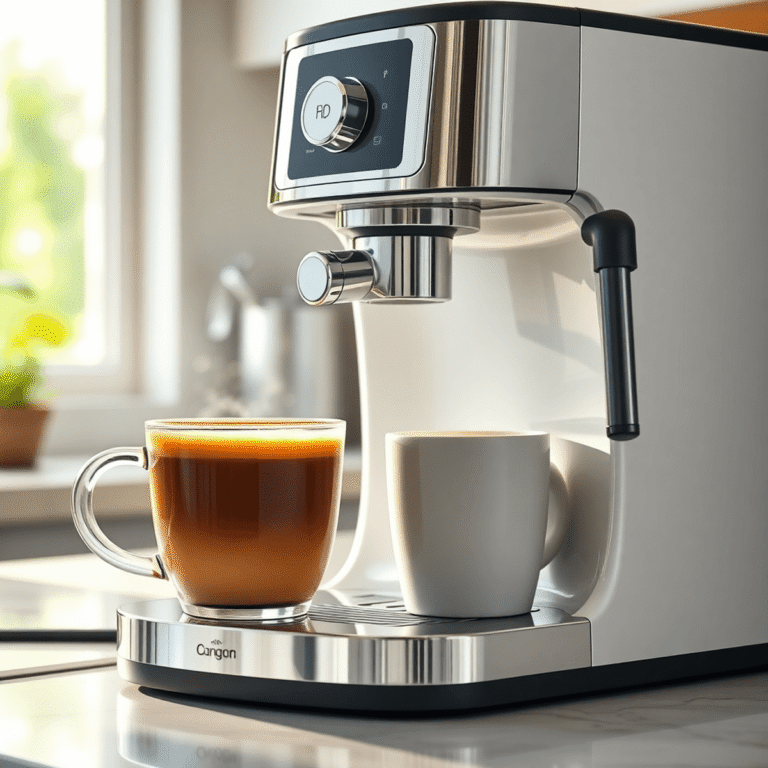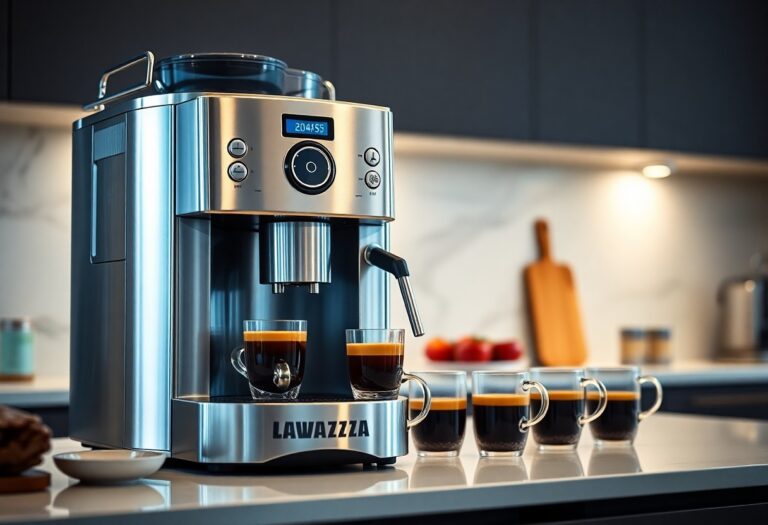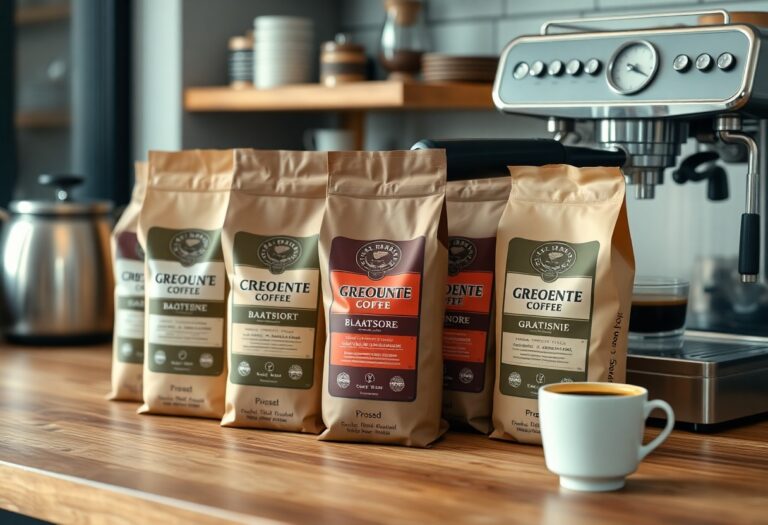What is a Manual Coffee Machine – Hands-On Brewing
With a manual coffee machine, you engage in hands-on brewing that allows you to take control of every aspect of your coffee-making process. These machines require you to physically exert some effort, leading to a more personalized experience and a deeper connection with your brew. Using your own skill, you can adjust factors like water temperature and brew time, which can significantly influence the flavor profile of your coffee. While it demands more attention compared to automatic machines, the rewarding ritual of crafting your perfect cup is often worth the effort.
Key Takeaways:
- A manual coffee machine allows users to have complete control over the brewing process, from water temperature to extraction time.
- Hands-on brewing techniques can enhance your coffee experience by enabling experimentation with various grind sizes and brewing methods.
- The tactile aspect of manual machines fosters a deeper connection to the art of coffee making, elevating the overall enjoyment of the beverage.
- Different types of manual coffee machines, such as pour-over and French press, each offer unique characteristics that affect flavor and body.
- Using a manual coffee machine requires practice and skill, but it can result in a more personalized and flavorful cup of coffee.
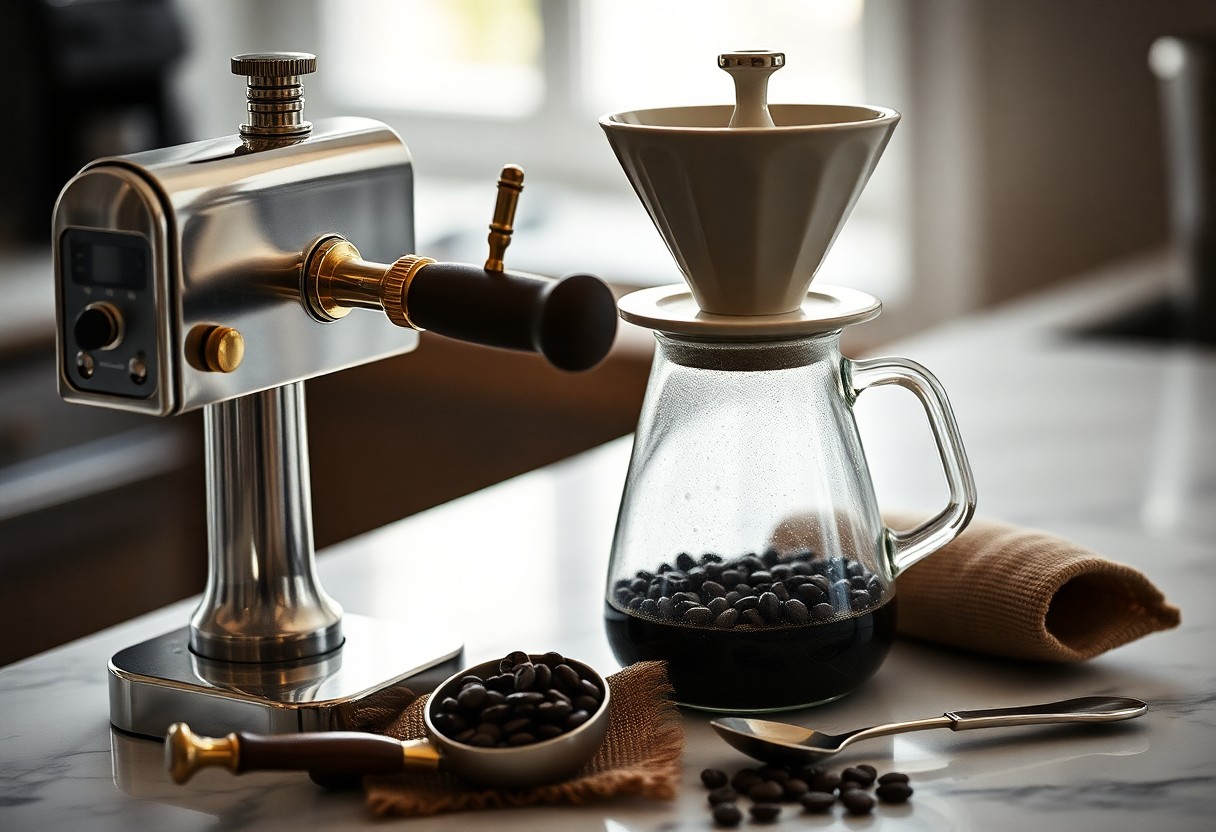
The Craft of Manual Brewing: A Return to Tradition
Embracing the practice of manual brewing allows you to connect with coffee in a much deeper way. This intentional approach highlights traditional techniques that honor the origins of coffee-making. Each step, from selecting the beans to the final pour, is an opportunity to engage all your senses, fostering an appreciation for flavors that are often lost in mass-production brewing methods.
Celebrating Artisanal Coffee Practices
With a focus on artisanal coffee practices, your brewing becomes an art form rather than just a daily routine. Sourcing beans from local roasters or direct trade farmers encourages sustainable practices and supports economies while providing fresh options that enhance your overall experience. This commitment to quality transforms each cup into a masterpiece of flavor and aroma.
The Experience: Ritual, Patience, and Reward
The ritual of manual brewing involves a mindful process that intertwines patience and skill. As you measure, grind, and brew, every moment spent intensifies your connection to the coffee. There’s a palpable satisfaction that arises when observing the transformation of water and grounds into a fragrant elixir that reflects your efforts.
Engaging with manual brewing invites you to embrace the journey, rather than simply rushing to the destination of a quick caffeine fix. The process can take several minutes—whether you prefer pour-over, French press, or AeroPress—each method allows you to truly savor the intricate flavors that develop through careful extraction. This hands-on approach not only elevates your coffee but also reinforces a sense of achievement with each well-crafted cup. As you revel in the rich aroma and flavor profiles, the reward feels richly deserved, encapsulating the essence of what it means to truly enjoy coffee.
Anatomy of a Manual Coffee Machine: Essential Components
Understanding the anatomy of a manual coffee machine reveals the imperative components that contribute to your brewing experience. Each part plays a vital role, whether it’s the grinder that shapes your coffee grounds, the brew head that evenly distributes water, or the pressure mechanism that influences extraction. Familiarity with these components transforms your approach to brewing and enhances your overall coffee quality.
Understanding the Mechanisms: Grinders, Brewers, and Water
The core mechanisms behind manual coffee machines lie in the grinders, brewers, and water management. The grinder determines the consistency of your coffee grounds—coarser settings work well for French press, while finer grounds are needed for espresso. The brewer’s design governs how water interacts with the grounds, impacting flavor extraction. Lastly, the quality and temperature of the water can make or break your brew, affecting solubility and the overall taste profile.
The Influence of Material and Design on Flavor
The materials and designs of your manual coffee machine significantly influence the flavors extracted during brewing. For instance, stainless steel and glass are known for retaining temperature well, promoting consistent extraction, while ceramic can add subtle flavors. Furthermore, the shape of the brew head affects water flow, which in turn impacts how the coffee grounds interact with water—leading to varying richness and depth in flavor.
The choice of materials extends beyond mere aesthetics; it can impact thermal conductivity and even chemical interactions during the brewing process. A brass brew head, for example, offers excellent heat retention, which is ideal for espresso, whereas a glass carafe may allow for a more nuanced tasting experience with pour-over methods. Understanding these dynamics empowers you to seek out manual coffee machines that align precisely with your flavor preferences and brewing style. A well-designed machine made from quality materials not only enhances the sensory experience but also ensures consistency and excellence in every cup.
Brewing Techniques That Elevate Your Coffee Game
Mastering manual brewing techniques can significantly enhance your coffee experience, allowing you to extract unique flavors tailored to your preference. Techniques like pour-over, French press, and Aeropress not only add a level of artistry to your routine but also empower you with greater control over the brewing process. Each method offers distinct characteristics and flavor profiles that can transform your morning cuppa into an extraordinary journey. For a deeper understanding of how these methods compare, check out The Ultimate Coffee Experience: Manual vs. Automatic ….
The Pour-Over Method: Precision and Control
The pour-over method exemplifies precision in coffee brewing, allowing you to control every variable, from water temperature to grind size. By slowly pouring hot water in a circular motion, you ensure even saturation of the coffee grounds. This direct interaction not only highlights the beans’ origin flavors but also enables you to adjust brewing time for desired strength. The result? A clean, flavorful cup that allows the coffee to shine.
French Press and Aeropress: Versatility and Texture
The French press and Aeropress are champions of versatility, each offering a unique dimension to your coffee experience. You can brew with coarse or fine grinds, adapt steeping times, and experiment with water-to-coffee ratios, leading to a range of textures and flavor profiles. While the French press delivers a rich, full-bodied brew, the Aeropress offers a smoother and faster solution, enjoying increasing popularity among coffee enthusiasts.
Both the French press and Aeropress cater to diverse tastes. The French press, with its steeping process, extracts oils and sediments that contribute to a hearty mouthfeel. On the other hand, the Aeropress utilizes pressure to achieve a cleaner cup, effectively filtering out oils while maintaining a lovely richness. You might find yourself alternating between these methods based on your mood or the kind of coffee experience you desire, reinforcing the idea that manual brewing isn’t just about preparation—it’s an expression of your coffee journey.
The Taste Test: Evaluating Flavor Profiles and Brewing Styles
As you research into the world of manual coffee machines, tasting the results of your brewing efforts becomes crucial. Evaluating flavor profiles allows you to appreciate the nuances in your coffee, whether it’s the warm, earthy notes of a dark roast or the bright, fruity acidity of a medium roast. Engaging in taste tests helps you recognize how different brewing styles can alter your everyday cup, transforming it into an exquisite experience you can craft at your leisure.
How Brewing Methods Impact Flavor Complexity
Different brewing methods significantly influence your coffee’s flavor complexity. For instance, a pour-over technique emphasizes clarity and brightness, highlighting the bean’s more delicate floral notes, while a French press may deliver a fuller body and richer, bolder flavors due to longer extraction times. Experimenting with these methods reveals how water temperature, brew time, and grind size can shape your unique cup of coffee.
Popular Comparisons: From Bitter to Fruity
Flavor profiles in coffee can range widely from bitter to fruity, depending on the brewing method and coffee origin. A dark roast brewed using a traditional espresso machine might yield a strong, bitter flavor, perfect for those who enjoy a robust cup, whereas a cold brew using a medium roast could present sweet, fruity characteristics with less acidity. Understanding these comparisons enables you to find a style that resonates with your taste preferences.
Popular Comparisons in Coffee Flavor Profiles
| Bitter | Fruity |
| Dark roasts | Medium to light roasts |
| Espresso | Pour-over |
| French press | Cold brew |
| Over-extracted coffee | Delicate brews |
Focusing on popular comparisons between bitter and fruity flavors, you’ll discover how origin plays a vital role. Coffee beans from regions such as Ethiopia often showcase bright and fruity features, while beans from Colombia tend to present a balance, offering hints of chocolate alongside caramel undertones. Adjusting your brewing method not only draws out these qualities but also introduces you to the wide spectrum of coffee experiences available at your fingertips.
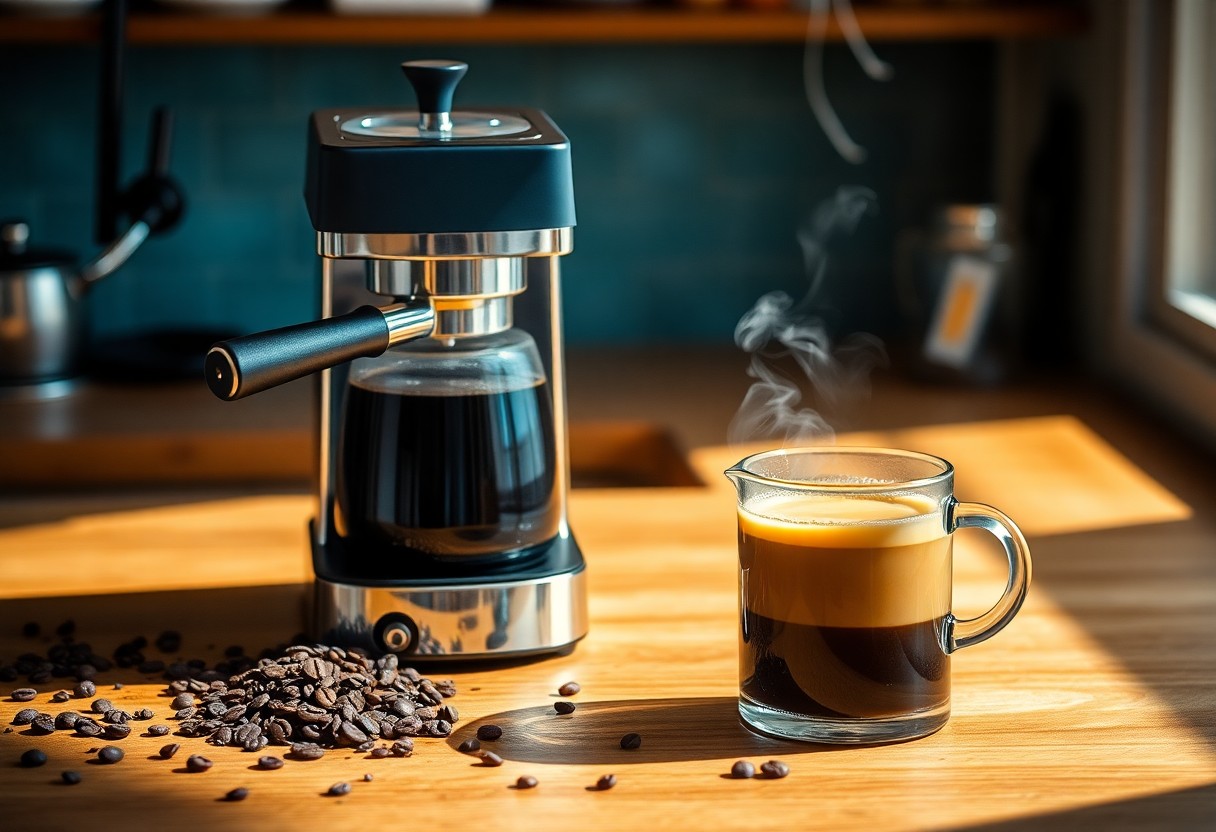
Breaking Down Barriers: Why Manual Brewing is for Everyone
Manual brewing opens up a world of coffee possibilities, proving that this rewarding experience is accessible to all. Regardless of your prior coffee knowledge or budget constraints, you can evolve your coffee routine by embracing simple techniques and affordable tools. This democratization of coffee brewing allows anyone—from a college student to a seasoned barista—to participate in the journey of crafting exceptional cups of coffee, paving the way for creativity and personalization.
Accessibility: Demystifying Cost and Skills
Many people mistakenly believe that manual brewing requires significant investment or advanced skills. In reality, a quality manual coffee maker can be found for under $30, and even candle-making beginner tools, like a pour-over cone, can be incredibly effective. With just a bit of practice, you can refine your brewing technique, making coffee accessible and enjoyable without the hefty price tag or barista-level expertise.
Building Community: Coffee as a Social Experience
Sharing coffee has a unique way of bringing people together. Whether you’re hosting friends over a pour-over session or joining a local coffee cupping event, you create moments of connection that enrich the experience. Engaging with others around the shared pursuit of exceptional coffee leads to friendships and discussions that deepen your appreciation for the craft, expanding your knowledge and passion.
Creating a community around manual brewing invites diverse perspectives and flavors into your coffee life. Community events, like local coffee tastings or workshops, often expose you to different brewing methods, exotic beans, and cultural practices, allowing you to explore a world beyond your own cup. Not only does this foster camaraderie among coffee enthusiasts, but it also encourages deeper conversations about sustainability, ethical sourcing, and the artistry behind each brew. By fostering these connections, you can enrich your coffee journey while contributing positively to the craft and culture surrounding it.
Conclusion
Hence, using a manual coffee machine allows you to take full control of your brewing process, resulting in a personalized cup of coffee that suits your taste preferences. By engaging in hands-on brewing, you can experiment with various techniques and parameters to achieve the perfect brew. This method not only deepens your understanding of coffee but also transforms the act of making coffee into an enjoyable ritual. Whether you’re a novice or a seasoned enthusiast, a manual coffee machine can significantly enhance your coffee-making experience.
FAQ
Q: What is a manual coffee machine?
A: A manual coffee machine, often known as a hands-on brewing system, is a type of coffee maker that requires the user to have direct control over each step of the brewing process. Unlike automatic machines, manual coffee machines allow users to adjust parameters such as water temperature, grind size, and brew time to create a customized coffee experience. Popular types of manual coffee machines include pour-over drippers, French presses, and espresso machines.
Q: What are the benefits of using a manual coffee machine?
A: One of the main benefits of using a manual coffee machine is the level of control it provides, enabling users to experiment with different brewing methods and techniques to find their ideal cup of coffee. Manual machines often result in a richer and more flavorful brew, as they serve to highlight the unique characteristics of the coffee beans. Additionally, many coffee enthusiasts appreciate the ritual and skill involved in hands-on brewing.
Q: Do manual coffee machines require any special skills?
A: While no prior experience is necessary to use a manual coffee machine, having some knowledge about the brewing process can greatly enhance the quality of the coffee produced. Skills such as understanding grind size, coffee-to-water ratio, and brew time can influence the final taste. Beginners may take a bit of time to master these techniques, but many resources are available to help them learn and refine their skills.
Q: What types of coffee can be made with a manual coffee machine?
A: A variety of coffee styles can be made with a manual coffee machine, depending on the specific type being used. For example, espresso machines are designed for making rich, concentrated coffee shots, while French presses produce a full-bodied brew. Pour-over drippers can create a clean and crisp coffee. Each method offers a different flavor profile and experience, allowing users to explore numerous ways to enjoy their coffee.
Q: How do I clean and maintain a manual coffee machine?
A: Cleaning and maintenance for a manual coffee machine vary depending on the type used but generally include rinsing removable parts with hot water after each use. For drip systems and pour-overs, it’s important to remove coffee grounds and wash filters regularly. Espresso machines require deeper cleaning, including descaling to prevent mineral buildup. Following the manufacturer’s guidelines and cleaning after each brewing session will help maintain the machine and enhance the quality of the coffee.

